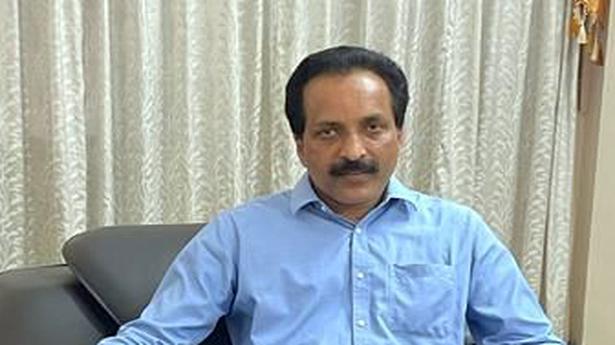
An anomaly for two seconds led to SSLV mission’s underperformance: ISRO chief
The Hindu
Unlike Chandrayaan-2, the orbiter in Chandrayaan-3 will not have payloads to perform experiments, says Somanath
S. Somanath, chairman, Indian Space Research Organisation (ISRO), is a bold man and if he is disappointed that ISRO’s Small Satellite Launch Vehicle (SSLV), in its debut mission from Sriharikota on August 7, put the Earth Observation Satellite (EOS-2) and students’ AzaadiSAT in the wrong orbit, he does not show it. ISRO said the SSLV put the satellites into a 356 km X 76 km elliptical orbit instead of a 356-km circular orbit. “Satellites are no longer usable. Issue is reasonably identified. Failure of a logic to identify a sensor failure and go for salvage action caused the deviation”, ISRO explained.
The SSLV is a three-stage rocket and all its stages are powered by solid propellants. It is designed to put a 500-kg satellite into orbit.
Editorial | Space to learn: On the failure of ISRO’s maiden small satellite launch vehicle mission
The same evening, Dr. Somanath gave an interview to The Hindu in Chennai and said “an anomaly” for two seconds in one of the accelerometers in the launch vehicle led to the mission’s underperformance. He explained at length what went wrong and answered a range of questions.
Dr. Somanath took over as ISRO chairman on January 14, 2022. He is Secretary, Department of Space and Chairman, Space Commission. He was director, Vikram Sarabhai Space Centre (VSSC), Thiruvananthapuram, before he became ISRO Chairman. He is a reputed rocket technologist and played a key role in the development of ISRO’s GSLV-MkIII which weighs 640 tonnes. Excerpts:
It is not the logic of the velocity trimming module. This is a logic of the launch vehicle. When something is not working very well, the rocket will have a salvage option. Basically, we look at the various failures which are possible in a rocket. We are prepared for failures, what we should do with failures. One such condition is called the accelerometer failure. There are accelerometers and sensors around which measure the rocket’s acceleration in the forward direction. Supposing one of these accelerometers is a failure, what should we do next? There are algorithms sitting in the side. The accelerometer can fail just after lift-off… Still, it is designed to put the satellite in the correct orbit.
In this case, what happened is that the measurement of the accelerometer showed some anomaly just at the point of the separation of the second stage. When it showed such an anomaly, the internal computer felt that the accelerometer had failed. Then it triggered something called the salvaging operation.

In a study published in the journal Mammalian Biology on December 23, 2024, researchers compared the calls of Asian elephants based on their age, sex, and behaviour. They found the duration of trumpets remained fairly consistent across all age classes for both male and female Asian elephants but roars and roar-rumbles got longer with age.












